TWO COMMON SNAILS
4/18/21
With spring, snails are becoming more active, and you can easily find them on our street the morning after it rains. Two of these are common to the region, the Common Button and White-lip Globe. I have found a third snail in our neighborhood, but have seen it only once. I will post photos of it when I have more photographs and a better description.
Common Button
The Common Button (Mesomphix vulgatus Baker, 1933) is by far the most common snail in our neighborhood, and I’ve found more of them than all of the other snails combined. On live animals, the body is dark, almost black, and the shells are a warm brown above, often with an abraded tip (apex) of the shell.
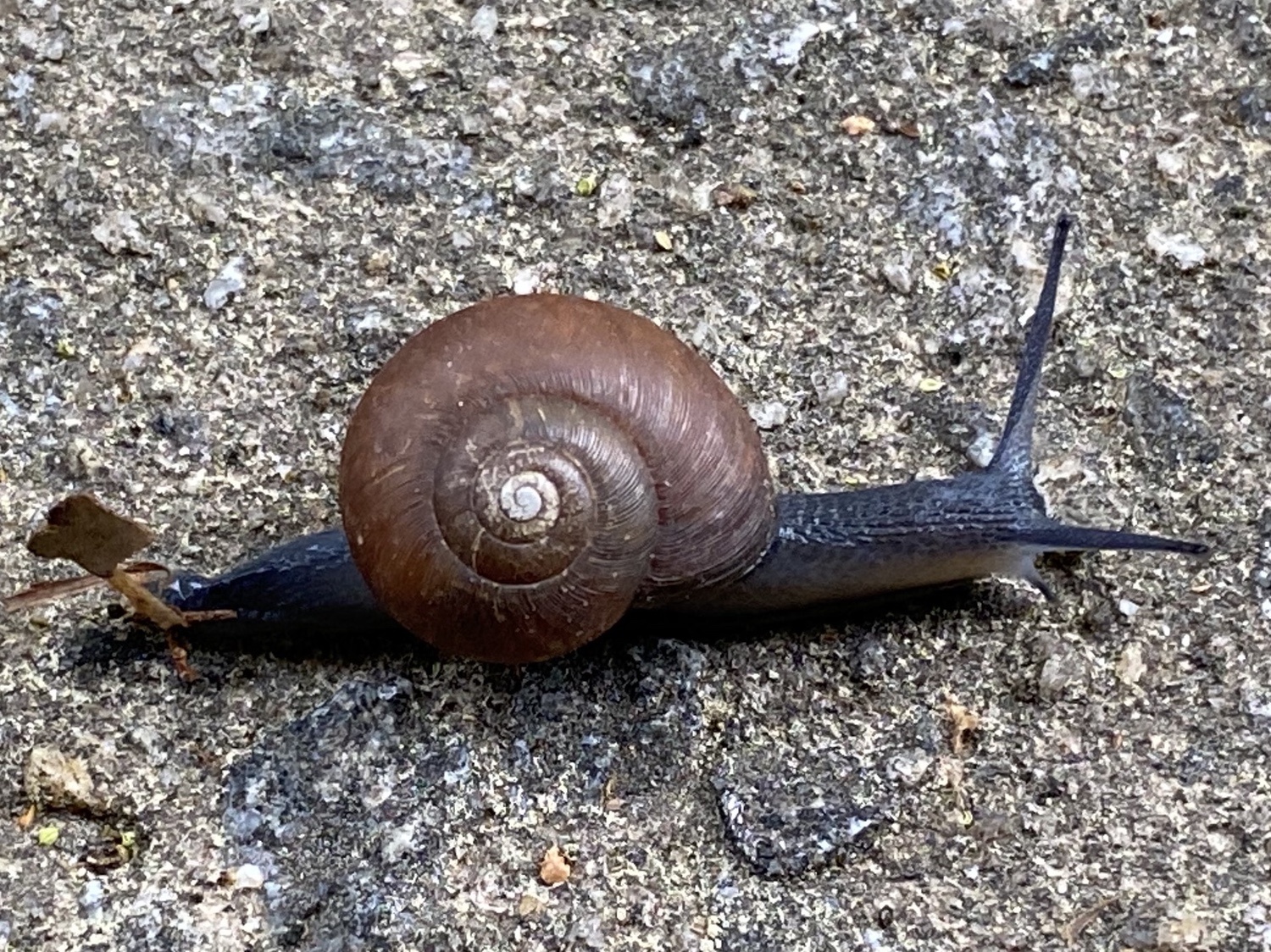
The shells are 16–22 mm in diameter (0.6–0.9"). On the top, the shells are have very fine growth lines, but these fade on the bottom. The bottom of the shell is glossy and distinctly more olive. The umbilicus (the hole in the center of the bottom of the shell) is very narrow, called perforate. The shell is thin and fragile, even translucent, and it is easy to see movements of the body of the snail through the shell.
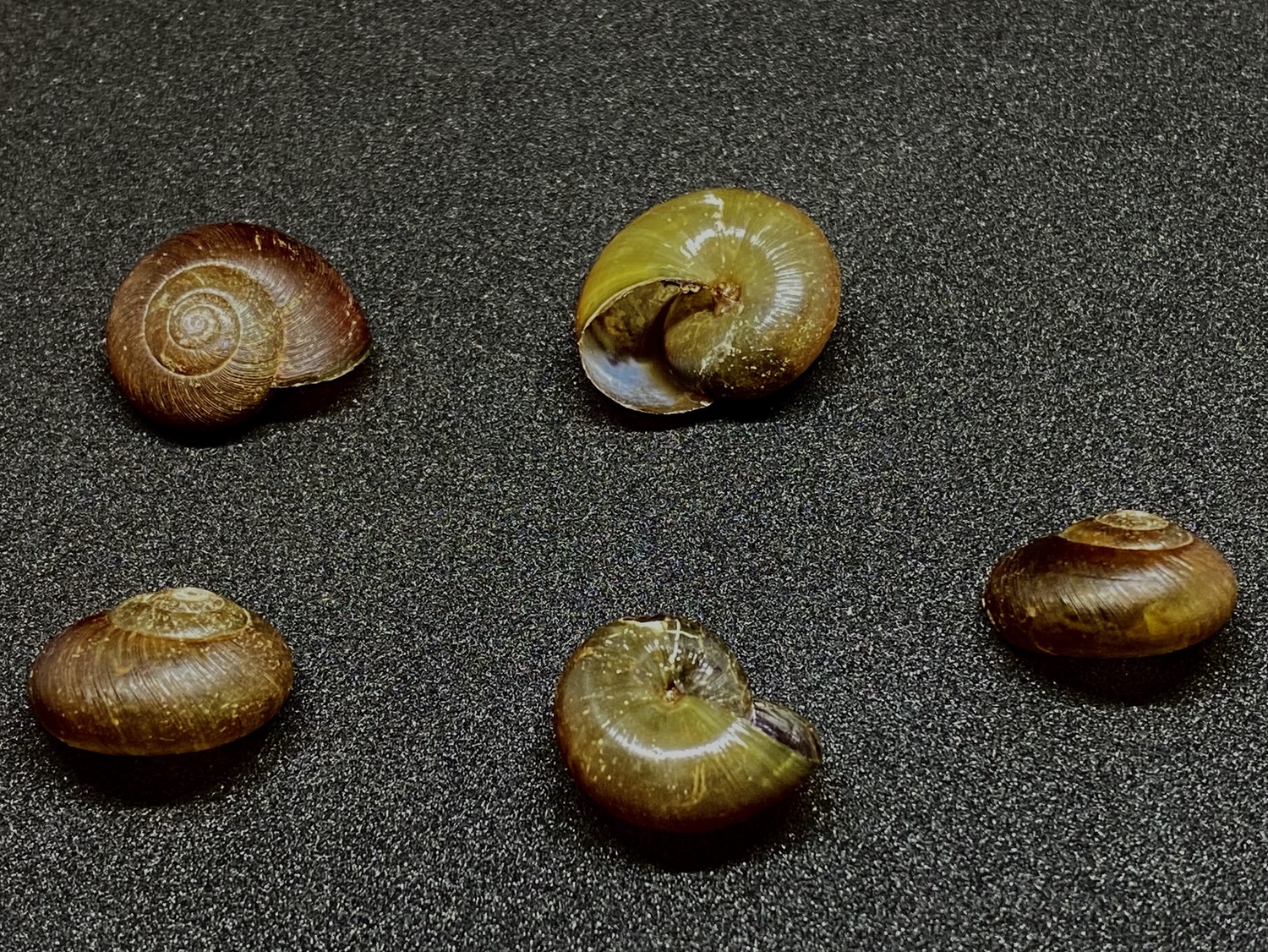
White-lip Globe
The White-lip Globe (Mesodon thyroidus (Say, 1816)) is less common in our neighborhood but is reported from more sites in the region than the Common Button. The shell is usually a medium brown and has a prominent white lip. The shell is distinctly more globose and taller than the Common Button, which is fairly flat. The body is a medium brown to pale grayish tan. The apex is often abraded.
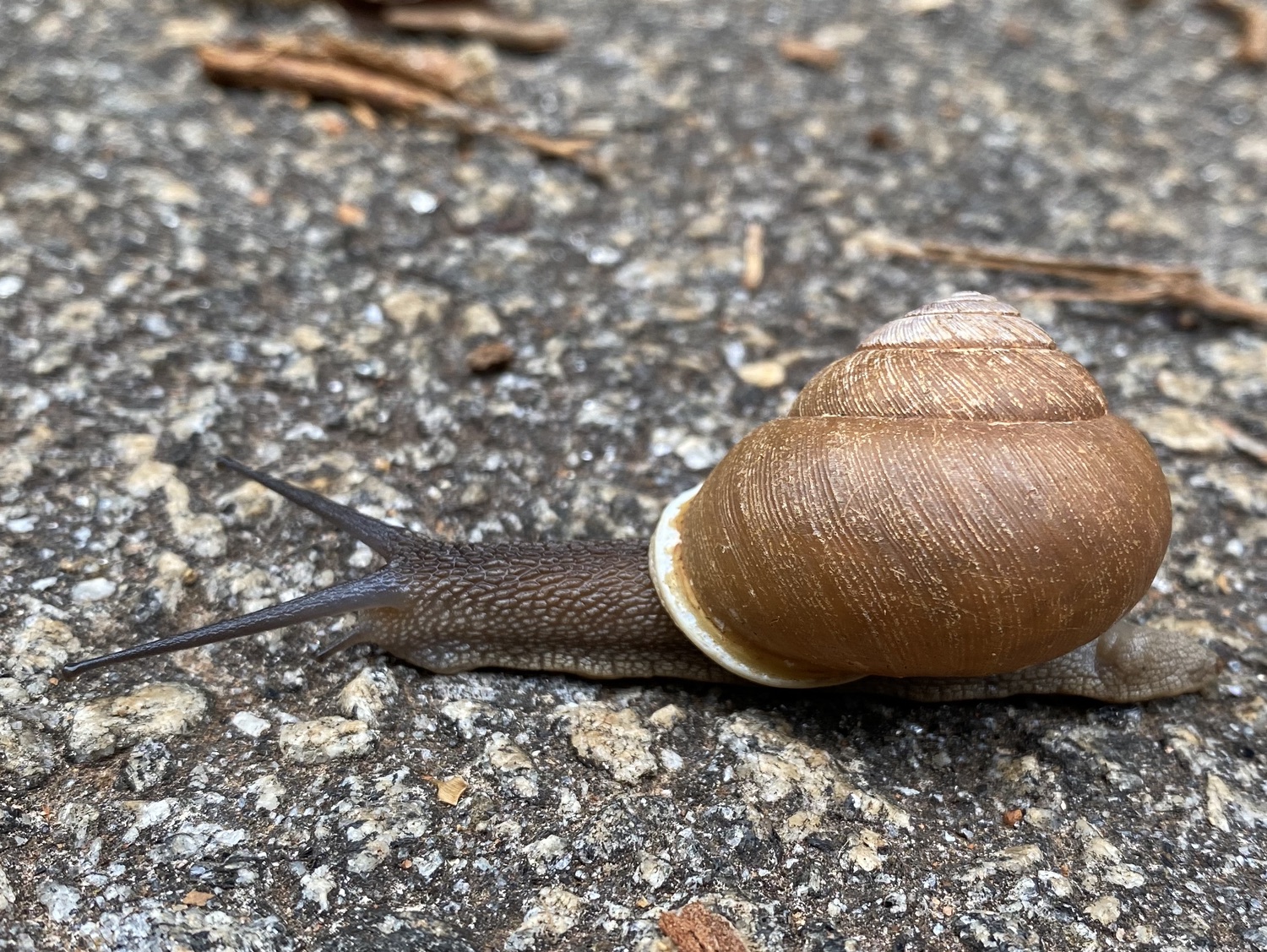
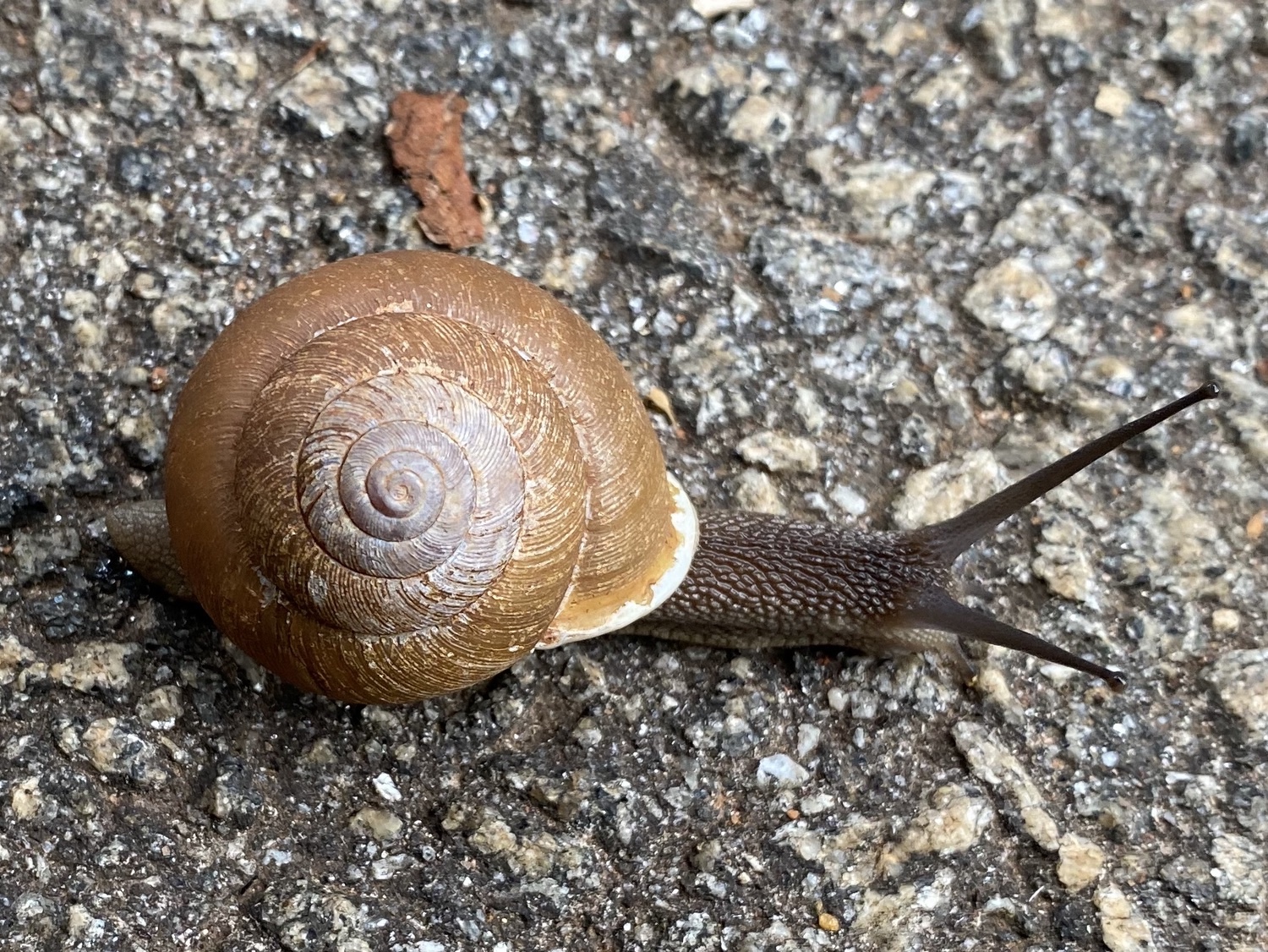
The two shells I have collected are 20–21 mm in diameter (0.8"), but I’ve seen larger ones in the neighborhood last summer; they are reported to get up to 28 mm (1.1") in diameter. Growth lines are present all over the shell, including on the underside. These are finely cut by grooves that run the length of the shell, although these grooves are visible only with a hand lens. The shell also has fine branching lines on it that look almost root-like. The color ranges from a warm brown to a yellowish brown.
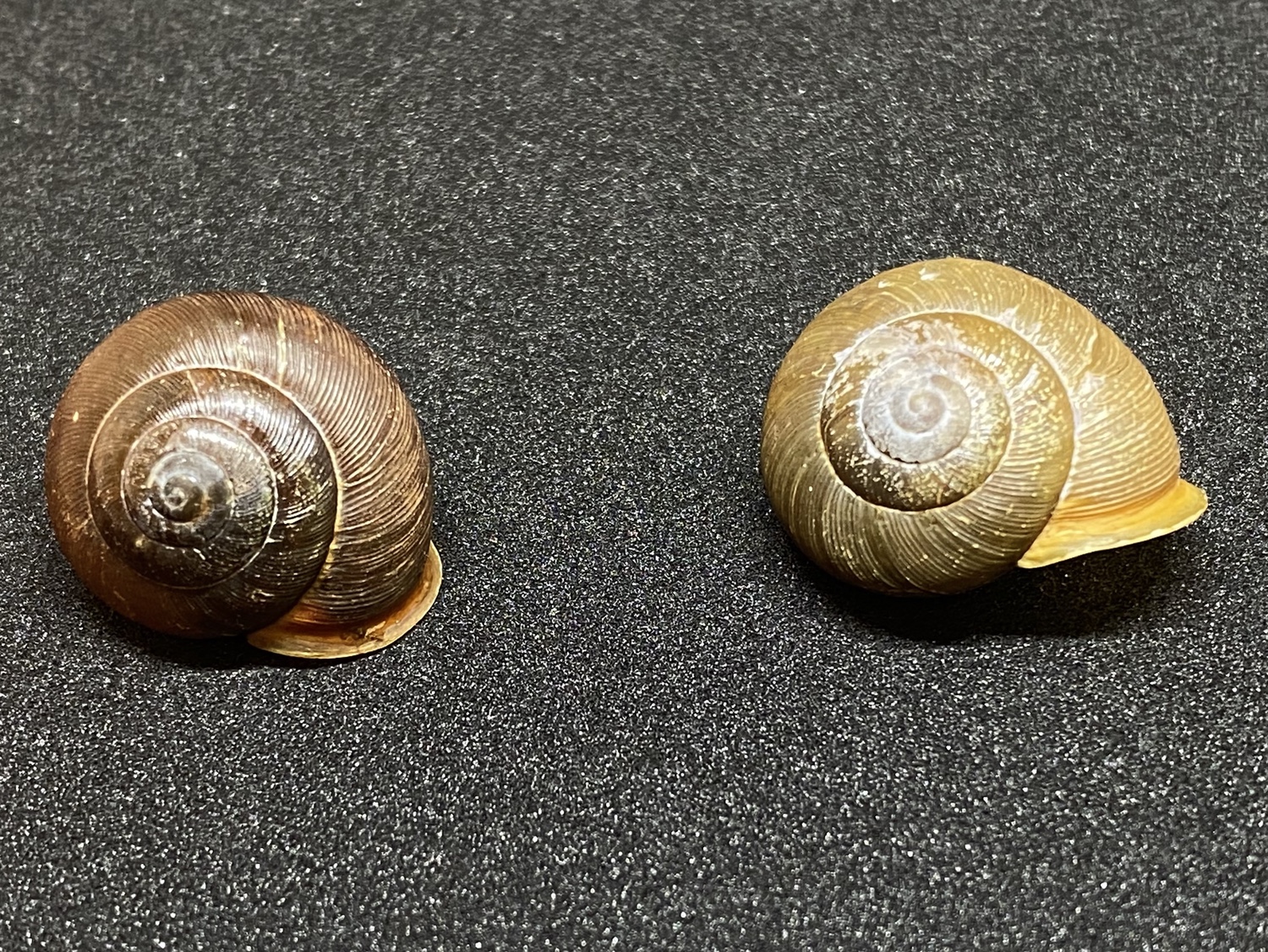
The shell has a broad lip that is yellowish to tan on the outside, and mostly white on the inside. The umbilicus is nearly covered by an extension of this white lip. Some shells have a very small white tooth on the inside of the aperture (left, below), but this is absent on others (right, below).
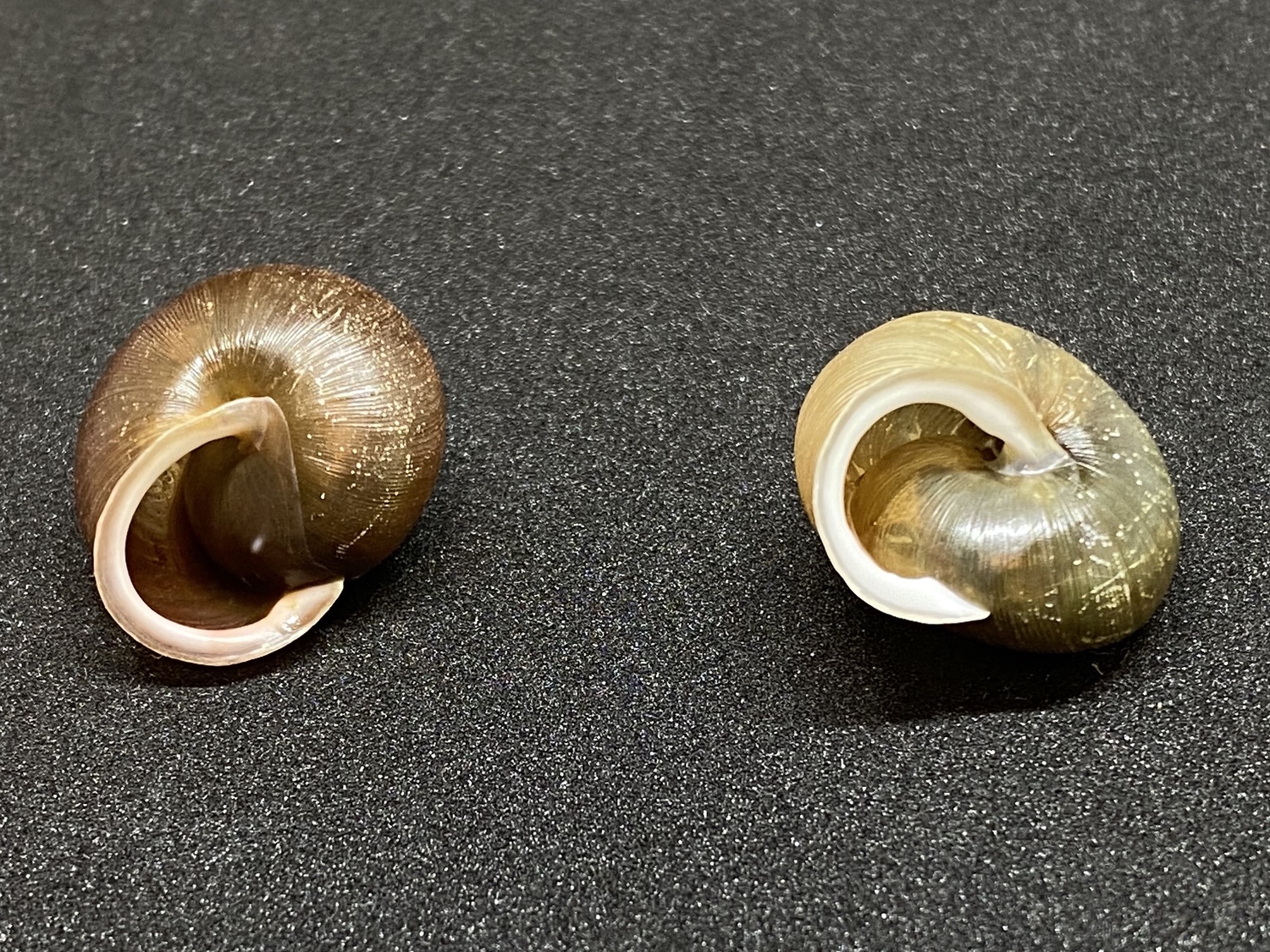
Snails in the Piedmont
This part of Georgia can be a tough place for snails because they need calcium to make their shells, and rocks around here are generally poor in calcium. Most of the rocks in the area are gneiss and schist, which are dominated by quartz, alkali feldspar, and muscovite and biotite mica, none of which have calcium. These rocks can contain minor amounts of garnet and amphibole, which do have calcium. Amphibole is much more common in a dark-colored rock called amphibolite, which also occurs in the area; you can often recognize these areas by the abundance of Redcedar, which thrives on their basic soils.
White-lip Globes generally have a well-developed tooth near the aperture, except in areas that are calcium-poor, like our local shells. This toothless form was separated into its own species in the 1820s (Yellow Globelet, Mesodon clausus), but it is now considered by most malacologists to be a local variant, not a species. This is true for many snail species because they were described before the concept of evolution of species was understood. These early studies approached species description from the aspect of idealized types rather than interbreeding populations of individuals that show variation. For some freshwater snails, sometimes dozens of species have been collapsed into a single species because the variation in species with environment is now better understood.
Areas that have limestone bedrock, such as in northwest Georgia, have a much greater abundance and diversity of land snails. It would be interesting to know in our area if areas with more extensive amphibolite also have more snails. In addition, some plants may be better at taking up calcium, and its possible that snails would be more common around those plants.
There are only two spots along our street where I have noticed lots of snails. One is opposite 835 Riverbend Parkway, and the other is opposite 675–715 Riverbend Parkway. It is unclear why these two places have more snails than anywhere else. The area around 835 has Bay Laurel and is unique in the neighborhood; perhaps snails like this plant. The other area doesn’t have Bay Laurel, and although it is shady north-facing slope, other areas in our neighborhood are also north-facing, but lack snails.
Over 100 species of land snails are present in this part of Georgia, but over half are reported from only one or two locations. In part, this reflects how poorly studied land snails are in Georgia, but it also reflects the small ranges of many snail species and their specificity for particular habitats.
For land snails, the Carnegie Museum website is good, although it is mainly for Virginia and Pennsylvania. The shell-collectors website jaxshells.org has good photographs of about a dozen common Georgia snails. For aquatic snails, the Freshwater Gastropods of North America website is fantastic.